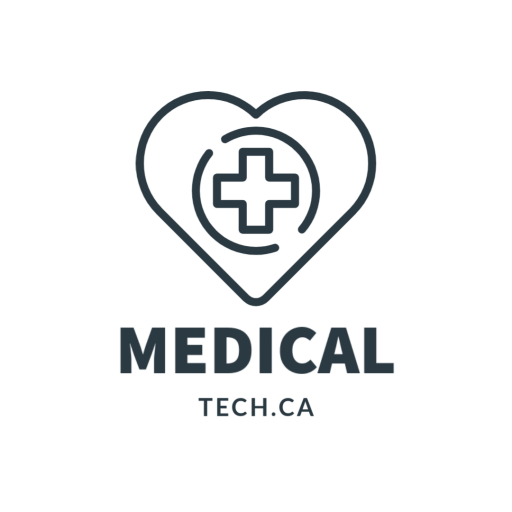
by medicaltechont | Feb 21, 2015 | e-Health, Electronic Medical Records, emr, Healthcare, ISO, Medical Records, Ontario, OntarioMD
It looks like another #OntarioMD approved EMR vendor is no more. In a follow up to our article “Instability with #EMR in #Ontario“, yesterday OntarioMD updated their approved vendors to indicate the following.
As of February 20, 2015 the Jonoke Software Corporation Inc’s EMR offering JonokeMed v5.5 is no longer a funding eligible EMR.
No specifics were listed, however the site indicated some type of “breach”. If you are looking for more information please click on the link below or contact OntarioMD directly.
Read more from the OntarioMD.

by medicaltechont | Dec 20, 2014 | Canada, e-Health, eHealth, EHR, emr, Google, Ontario MD, Open-Source, Software, Technology
 Did we see this coming?
Did we see this coming?
Well the last 2 to 3 months have been interesting and a bit disconcerting, for medical professionals in Ontario. We now have 3 instances of uncertainty with technology, for those attempting to move forward with EMR in Ontario. Some of the issues could not have been foreseen. However in others we may have to address the collective wisdom, at the time, of the body responsible for certifying vendors in Ontario.
The OntarioMD mandate is to enhance EMR use in Ontario. As indicated on their website:
“OntarioMD manages the Electronic Medical Records (EMR) Adoption Program on behalf of eHealth Ontario to help community-based family physicians and specialists transition from paper records to EMRs to enhance patient care and practice efficiency. Eligible physicians receive funding and other supports to assist them with the implementation of an EMR and optimizing their EMR use.”
There is a host of initiatives by OntarioMD. However, in essence, so far they have created a certification process; where private vendors ensure that their software applications meet regulated standards. The process, overall, has been successful ; helping Ontario to finally move forward in EMR and data integration. Unfortunately there have been some recent bumps in the road.
Bell Canada is getting out of the market?
With TELUS Health making significant inroads in the EMR market who would have thought that Bell Canada would decide to step out and close its EMR offering? The OntarioMD website has already been updated indicating the following:
“Bell Canada has announced, as of December 1, 2015, the Bell EMR Service will no longer be available. Information for physicians using the Bell EMR offering.”
What does this mean for clients? Change is on the horizon. Basically by December 1, 2015, Bell EMR will be no more and clients will need to move to a certified solution. Unfortunate for those who have already spent a significant amount of time and resources getting up to the EMR standard in Ontario.
Jonoke was suspended? What?
Jonoke Software Development Inc. has been a long-standing player in the EMR market, even before there were specific standards set out by OntarioMD. Albeit their website still looks a bit dated, with a copyright dating back to 2012. OntarioMD has already indicated the following on their own website.
“Suspended** effective November 21, 2014. During the period the EMR offering is suspended, the EMR vendor is not permitted to promote or sell the EMR offering as funding eligible to physicians selecting an EMR from the EMR Adoption Program.”
What does this mean for clients? Who knows, the suspension online seems to be clouded in mystery. We can only hope that it’s not serious.
OntarioMD and vendor battle over new OSCAR EMR? What changed?
OSCAR EMR (community software created out of McMaster University) is an interesting player in the EMR market. It was amazing that an open-source vendor was able to get successfully certified, when specific standards are set out by OntarioMD. Open-source generally allows individuals and / or corporations to modify the code under GPL; as long as the code is provided back to the “Community”. Question is how can OntarioMD even manage this situation, when OSCAR has “9 OSCAR certified vendors“? OSCAR allows certain companies to distribute OSCAR EMR on their behalf. However missing from the list is the darling of the group “Indivica“, who is no longer listed as a vendor. OntarioMD has not talked much about the dispute, other than posting a link to the news article and the response under the vendor news section. However OSCAR has listed the following:
“Important Notice Regarding Indivica – The software currently being installed by Indivica does not meet the requirements to be an Affiliated Product of OSCAR EMR and is not the Ontario EMR Specification 4.1a Funding Eligible Offering from OSCAR EMR.”
What does this mean for the many clients of Indivica, in Ontario? Possibly uncertainty and more confusion. Being that Indivica has changed the code, OntarioMD would need to re-certify the application. However OntarioMD may not necessarily have the resources to check the application every time it changes; in addition to all of the other vendors pushing OSCAR. Can OntarioMD ensure that all vendors of OSCAR EMR are certified? Where are the controls on the process or basic code? Moreover it questions the concept of open-source in EMR. How can a certified product allow code to be modified if there are standards to be followed? There are so many who claim to have “OSCAR” versions that it may become confusing for clients. It may be time for OSCAR to “close” the code or choose one vendor for their application for certification. This would be difficult since it would fly in the face of open-source. You don’t have to look far for an example. Just ask Google who was faced with the same situation. Google’s Android was forked by the mighty Amazon. There is also Cyanogenmod, a pure forked version of Android. Google does not have the ability to totally control the situation, being that Android is a form of open-source and Linux. Eventually, Google may opt to merge Android with Chrome OS and close the system. However I doubt this will happen soon. The growth of Android, as a challenge to Apple’s IOS, is in part due to the OEMs who Google turned a blind eye to in order to expand Android’s presence.
Choices need to be made soon
 OntarioMD and the eHealth Ontario may have some tough choices to make in order to move EMR forward. They have systems in place to handle situations like this, however the uncertainty places many medical professionals in a difficult position. Imagine going forward with a new EMR application, such as Bell, and being told that they have to change? Or learning that your EMR application vendor has been suspended? Or lastly working with a vendor that decides to go it alone, causing one to loose funding? The times are indeed changing dynamically, however it will get better. Stability is needed and standards must be met in order to move medical offices, hospitals and the technology forward. Besides the Ontario government does not necessarily have cash to burn in these trying times.
OntarioMD and the eHealth Ontario may have some tough choices to make in order to move EMR forward. They have systems in place to handle situations like this, however the uncertainty places many medical professionals in a difficult position. Imagine going forward with a new EMR application, such as Bell, and being told that they have to change? Or learning that your EMR application vendor has been suspended? Or lastly working with a vendor that decides to go it alone, causing one to loose funding? The times are indeed changing dynamically, however it will get better. Stability is needed and standards must be met in order to move medical offices, hospitals and the technology forward. Besides the Ontario government does not necessarily have cash to burn in these trying times.
by medicaltechont | Dec 13, 2014 | Technology
X.org, which develops the open-source X Window System for Linux and other Unix-y desktops, has warned security flaws have been discovered in the code – and some of them have been hanging around for 27 years.
The bugs can be exploited by applications to crash the window system, or run malicious code as the root user if the X server is running with those privileges.
The programming blunders were discovered by Ilja van Sprundel, a security researcher at IOActive, and cover how the X Server handles requests from client apps.
Read more.

by medicaltechont | Dec 13, 2014 | Technology
Microsoft Appoints Itself Sheriff of the Internet
“Microsoft contends it seized domains to stop distribution of two widely used malware tools”
It was 7 o’clock in the morning when the knocking on Dan Durrer’s front door woke him up. His dog started barking, and Durrer thought he was getting an early morning package. But when he opened the door, he wasn’t greeted by the FedEx man. He was face-to-face with a process server, a messenger from the courts, who handed him a stack of legal documents—three inches thick. Somewhere in that stack—buried in all the legalese—was the news that Microsoft had taken control of his company, but Durrer didn’t have time to read it. Almost immediately, his pager lit up with messages saying the company’s internet services had stopped working.
For the past 15 years, Durrer has worked as the CEO of a small internet service provider called No-IP. Based on Reno, Nevada, the 16-person company offers a special kind of Domain Name System service, or DNS, for consumers and small businesses, letting them reliably connect to computers whose IP addresses happen to change from time to time. It’s used by geeks obsessed with online security, fretful parents monitoring nanny cams in their toddler’s bedrooms, and retailers who want remote access to their cash registers. But it’s also used by criminals as a way of maintaining malicious networks of hacked computers across the internet, even if the cops try to bring them down.
Read more.
Other articles:

by medicaltechont | Apr 19, 2014 | Cloud, e-Health, eHealth, Security, Software
By Nicole Perlroth
The Heartbleed bug that made news last week drew attention to one of the least understood elements of the Internet: Much of the invisible backbone of websites from Google to Amazon to the FBI built by volunteer programmers in what is known as the open-source community. Heartbleed originated in this community, in which these volunteers, connected over the Internet, work together to build free software, to maintain.
wasWhat makes Heartbleed so dangerous, security experts say, is the so-called OpenSSL code it compromised. That code is just one of many maintained by the open-source community. But it plays a critical role in making our computers and mobile devices safe to use.
“This bug was introduced two years ago, and yet nobody took the time to notice it,” said Steven M. Bellovin, a computer science professor at Columbia University. “Everybody’s job is not anybody’s job.”
Read more at:
http://economictimes.indiatimes.com/articleshow/33958360.cms?utm_source=contentofinterest&utm_medium=text&utm_campaign=cppst



 Did we see this coming?
Did we see this coming? OntarioMD and the
OntarioMD and the 

